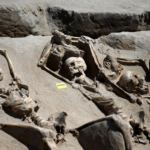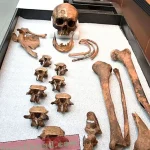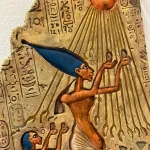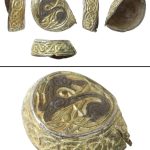Shamash and King Nabu are shown on the Tablet of Shamash, an ancient Babylonian relic from the ninth century BC.-apla-iddina

In the annals of ancient Babylonia, amidst the sands of Mesopotamia, lies a relic that encapsulates the rich tapestry of religious and political life of the time: the Tablet of Shamash. Dating back to the 9th century BC, this artifact offers a window into the religious beliefs and royal patronage of one of the world’s earliest civilizations. At its heart is the depiction of Shamash, the sun god, seated on his throne, with the Babylonian king Nabu-apla-iddina in attendance. This tablet stands as a testament to the intertwining of divine authority and earthly power in ancient Babylonia.

Shamash, the central figure of the tablet, held a prominent place in Babylonian religion as the god of justice, truth, and the sun. Often depicted with rays emanating from his shoulders, Shamash was believed to illuminate the world with his divine radiance and to preside over matters of law and morality. In the tablet, he is portrayed in a regal manner, seated majestically on his throne, symbolizing his authority over the celestial realm and his role as the dispenser of justice.
The presence of King Nabu-apla-iddina alongside Shamash underscores the close relationship between religion and kingship in ancient Babylonia. The king is depicted in a posture of submission and reverence, acknowledging Shamash as the ultimate source of divine authority. This scene reflects the Babylonian concept of kingship as a divine mandate, with rulers acting as intermediaries between the gods and the people. By aligning himself with Shamash, Nabu-apla-iddina seeks to legitimize his rule and affirm his commitment to upholding the principles of justice and righteousness.
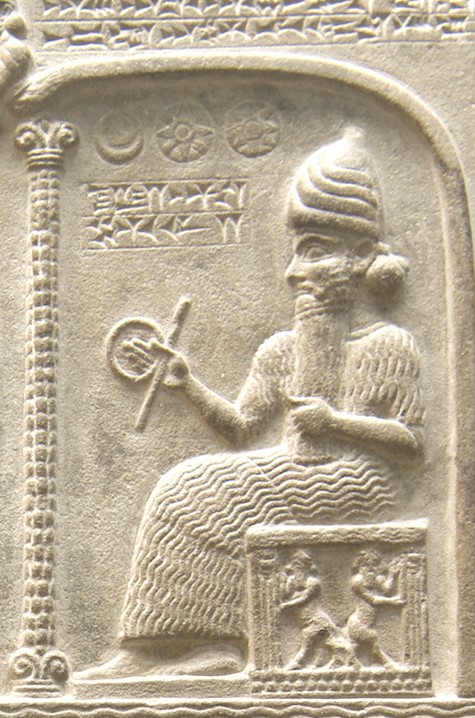
The tablet itself is a masterpiece of Babylonian artistry and craftsmanship. Carved from stone and adorned with intricate cuneiform inscriptions, it served not only as a religious artifact but also as a symbol of royal patronage and authority. The meticulous attention to detail in the depiction of Shamash’s radiant presence and the king’s subservience speaks to the skill and dedication of the artisans who created it. Every line and curve on the tablet conveys a sense of reverence and awe, inviting viewers to contemplate the divine mysteries and cosmic order embodied in the image of Shamash.
The Tablet of Shamash also provides valuable insights into the religious practices and beliefs of ancient Babylonia. The worship of Shamash was central to Babylonian religion, with temples dedicated to his cult scattered throughout the land. Rituals and offerings were conducted in his honor, seeking his favor and guidance in matters of law, commerce, and warfare. The tablet serves as a visual representation of these religious rituals, capturing the essence of Babylonian spirituality and the symbiotic relationship between gods and mortals.
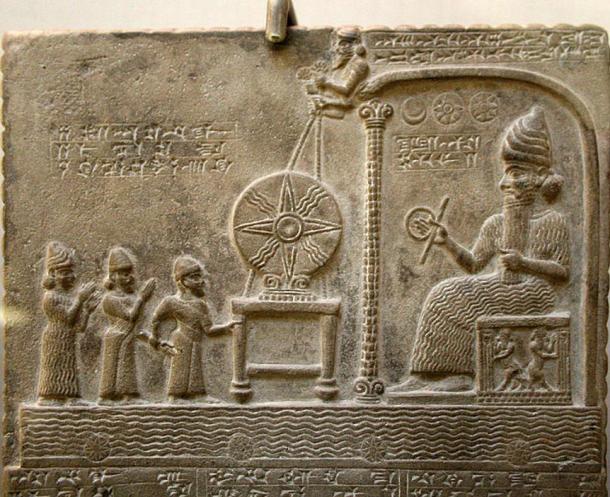
Moreover, the tablet offers a glimpse into the political landscape of ancient Babylonia. Kings like Nabu-apla-iddina sought to legitimize their rule by aligning themselves with the divine order represented by Shamash. By depicting himself in the presence of the sun god, the king asserted his authority and claimed divine sanction for his actions. The tablet thus serves as a propaganda tool, reinforcing the king’s status as the rightful ruler and guardian of Babylonian society.
In conclusion, the Tablet of Shamash is more than just a relic; it is a window into the religious, political, and artistic achievements of ancient Babylonia. Through its depiction of Shamash and King Nabu-apla-iddina, it offers insights into the complex interplay between divine authority and earthly power in Babylonian society. As a symbol of religious devotion and royal patronage, the tablet continues to captivate and inspire, reminding us of the enduring legacy of one of the world’s oldest civilizations.
